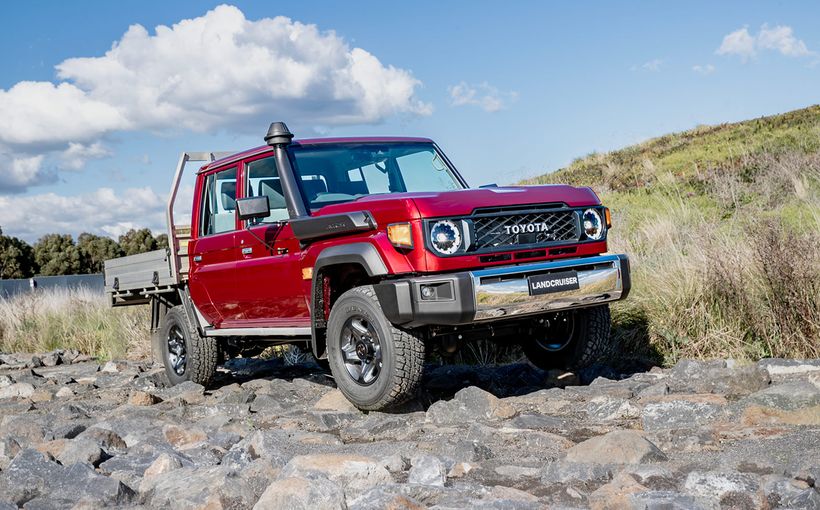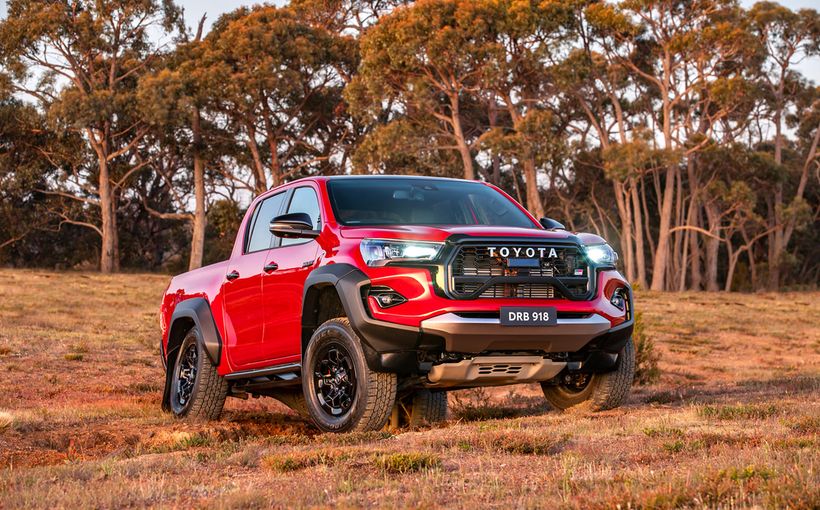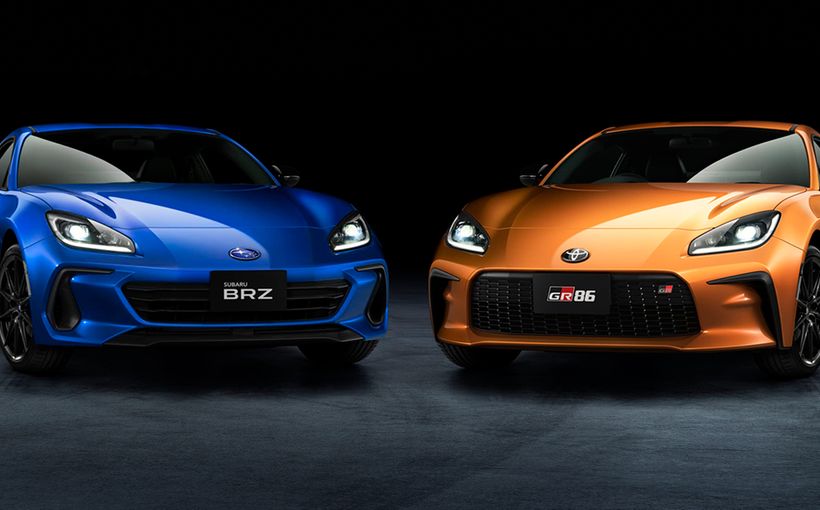Toyota Celica GT-Four: success and scandal of Japan's greatest rally car

From its inception in 1973 the World Rally Championship (WRC) was for almost two decades the exclusive domain of European marques including Alpine-Renault, Lancia, Fiat, Ford (UK), Audi and Peugeot. However, in 1990 the Japanese finally broke Europe’s stranglehold with what became the most successful Japanese rally car of all time – the Toyota Celica GT-Four.
The turbocharged all-wheel drive rocket won six WRC titles comprising four drivers’ and two manufacturers’ crowns. Toyota’s world champions included Spain’s Carlos Sainz (1990 and 1992), Finland’s Juha Kankkunen (1993) and Frenchman Didier Auriol (1994). Toyota’s two manufacturers’ titles also came in 1993 and 1994.
The GT-Four debuted in 1988 and through three model evolutions – ST165, ST185 and ST205 – was Toyota’s frontline fighter for almost a decade. In that time, between a total of nine drivers, the GT-Four scored 30 WRC victories.
The all-paw Celica was an equally potent weapon in Australia. Indeed, the GT-Four’s first WRC victory came at Perth’s Rally Australia in 1989 and thanks to Neal Bates, Coral Taylor and Toyota Australia, it also won three consecutive Australian Rally Championships in the mid-1990s.

However, the GT-Four did not always hit the headlines for the right reasons. In 1995 Toyota Team Europe was sensationally thrown out of the WRC and banned from competing for 12 months for using illegal turbo restrictors. President of the FIA (motor sport’s world governing body) Max Mosley called it “the most sophisticated device I’ve seen in 30 years of motorsports.”
So the Celica GT-Four was not only successful, but also controversial. Even so, it was the first Japanese car to win the world’s most prestigious rally title. And triggered an unprecedented era of WRC dominance by Japan, shared by rival marques Mitsubishi and Subaru, winning seven consecutive WRC titles between them from 1993 and 1999.
Fortunately for today’s enthusiasts, the Group A rules under which the GT-Four competed required limited series production of road-legal versions of each model to gain approval - or in FIA speak ‘homologation’ - for the WRC. These ‘homologation specials’ are prized today.
So, to understand how the Celica GT-Four became such a dominant force in global rallying (including Australia) for almost a decade, we have to travel back in time to the mid-1980s when Toyota took its first steps in becoming the first Japanese marque to win the WRC.

The First Generation: ST165
The birth of the Celica GT-Four can be traced to 1985, when an all-wheel drive convertible prototype was displayed on the Toyota stand at the Tokyo Motor Show. This was the first Celica to be called a ‘GT-Four’ but no motor sport intentions were evident at that stage.
However, that all changed with the launch of the front-wheel drive ST165 Celica the following year, with the first production GT-Four derivative based on the three-door hatchback and equipped with full-time all-wheel drive.
In early examples the centre differential, which transferred power to the front and rear diffs, was a mechanical unit which could be locked or unlocked via a dashboard switch. Later examples introduced a more advanced viscous coupling LSD.
The ST165 GT-Four was powered by the first version of Toyota’s intercooled 3S-GTE DOHC 16-valve turbocharged 2.0 litre inline four, mounted east-west as per the standard model backed by Toyota’s E50F five-speed manual gearbox. With simple but rugged MacPherson strut front and rear suspension, rack and pinion steering and four-wheel disc brakes, the ST165 GT-Four would serve as the production car basis for Toyota’s first Group A WRC challenger.
This was designed and developed by Toyota Team Europe (TTE) based at Cologne, Germany. Built to comply with the WRC’s Group A rules introduced in 1987, following the demise of Group B the previous year, TTE’s new forest racer was state-of-the-art featuring a massive 300kg-plus weight reduction, a light but immensely strong chrome moly roll cage bracing every load point in the bodyshell, Xtrac six-speed racing transmission, electronically-controlled differentials, bespoke Bilstein suspension and massive ventilated disc brakes. The 3S-GTE engine’s power output was increased from around 180bhp in the road cars to around 280bhp in the WRC versions.

The first Celica GT-Four made its WRC debut in the 1988 Tour de Corse, round five of the 13-round WRC. Although Juha Kankkunen retired with engine trouble, Swedish team-mate Kenneth Eriksson finished an encouraging sixth. Another Swede and WRC champion, Bjorn Waldegard, delivered Toyota its first podium with third place in Britain’s season-ending RAC Rally. It was a solid first season for the GT-Four, raising hopes of a potential win the following year.
Toyota lived up to those expectations in 1989, with Eriksson, Kankunnen and Sainz each scoring podium finishes. It was only a matter of time before the ST165 GT-Four took its first victory, which came in September at Perth’s Rally Australia, when Kankkunen led home Eriksson for an emphatic 1-2 result.
In 1990 Carlos Sainz, co-driver Luis Moya and their ST165 GT-Four delivered Toyota its first of many World Rally Championships. The Spaniard claimed the drivers’ crown after a dominant performance with four wins and five podiums. Arch rival Lancia and its star-studded driver line-up were outclassed by the Japanese juggernaut, with Bjorn Waldegard also scoring an important victory for Toyota in Kenya’s gruelling Safari Rally.
Sainz increased his stunning success rate in the ST165’s fourth and final season, winning five WRC rounds this time. Even so, it was not enough to defeat the consistent Kankkunen who claimed his third drivers’ championship for Lancia by a margin of only seven points.

The Second Generation: ST185
TTE maintained its momentum with the second generation of the GT-Four based on the latest ST185 Celica, which had been released in street-legal form in 1989 but did not enter WRC competition until 1992. However, the wait was worth it, given that it proved to be the most successful of the three models.
The transition to the new ST185 was more evolution than revolution. The latest version of the 3S-GTE engine featured numerous refinements to improve performance and durability, including a new twin-entry turbocharger with more efficient intercooler, a new heat-extracting bonnet design and increased cooling inlets in the composite front bumper/spoiler to name a few.
The new GT-Four debuted in the 1992 Monte Carlo and nailed its first WRC victory in Africa’s tough Safari Rally on its way to a second drivers’ title for Carlos Sainz.
For the 1993 season, Sainz and Toyota-turned-Lancia star Kankkunen swapped teams and cars. Kankkunen made the better move, winning five WRC rounds to claim his fourth drivers’ title in the same year Toyota won its first long-awaited manufacturers’ crown - the first Japanese manufacturer to do so.
Toyota successfully defended both of its championships in 1994, with Didier Auriol winning three rounds to secure his first and only drivers’ title ahead of Sainz, who had switched from Lancia to Subaru. However, the ST185 GT-Four was in its third and final season, due to be replaced by the latest ST205 model.

The Third Generation: ST205
TTE was so determined to hit the ground running in 1995, the latest ST205 GT-Four made its WRC debut late in 1994 with Kankkunen finishing second in Britain’s final round.
The new car had the latest generation of the 3S-GTE engine, with an improved twin-entry turbocharger incorporating a clever innovation to improve throttle response called ALS (Anti-Lag System). There was also an aluminium bonnet to save weight, four-channel ABS and what Toyota called ‘Super Strut Suspension’.
Auriol duly delivered the ST205’s first WRC victory in France’s Tour de Corse. Sadly, that would also be its only victory and the last WRC win for a Celica GT-Four, as it fell victim to a scandal that caused major embarrassment for Toyota later in the season.

The FIA’s pin-sharp technical inspectors discovered that the turbo inlet restrictor, fitted to all WRC cars to cap power outputs at 300bhp, had been illegally modified by TTE to allow more air to enter the engine (hence more power) yet was also designed to be (hopefully) undetectable when disassembled for inspection.
The FIA, although clearly impressed with the ingenuity of the illegal device, came down hard on TTE and to a lesser extent Toyota, which was cleared of any blame given that the tampering occurred at team level.
Toyota and its star drivers, including Kankkunen who had been in contention for his fifth drivers’ title, were stripped of all points earned in 1995 and the works team was banned from competing in the 1996 WRC. It was a sad end to the GT-Four’s incredible career, but its legacy as a multiple world rally champion will never be forgotten.

The Australian Connection: ST185 and ST205
The Celica GT-Four’s rallying influence spread around the world, not only in the WRC but also in numerous domestic rally championships - including Australia.
Thanks to Canberra-based rally ace Neal Bates, co-driver Coral Taylor and Toyota Australia, the ST185 and ST205 GT-Four Celicas were the class of the field in the country’s premier competition - the Australian Rally Championship (ARC) - for three consecutive seasons, when the outright division was for cars complying with the same Group A rules used in the WRC at the time.
In doing so, Toyota joined Datsun (Nissan) as the only Japanese marques to win three ARC titles in a row by that stage. Neal Bates also became the first driver to claim a hat-trick of ARC drivers’ titles since Ross Dunkerton in the mid-1970s.

1993
The GT-Four’s first ARC title in 1993 was achieved against rising Kiwi star Possum Bourne in his Group A Subaru Liberty RS Turbo and Mitsubishi top gun Ed Ordynski who drove both Group A and Group N (showroom-spec) Lancer Evolutions during the season.
The Subaru attack was spearheaded by Bourne and navigator Rodger Freeth, with Rob Herridge and Mark Nelson flying the Subaru flag in the Group N showroom class. Bourne showed formidable speed in the early rounds, but his results suffered due to reliability issues and the odd trip into the scenery.
Tragically, Freeth also died as a result of severe chest injuries sustained when the pair suffered a high-speed crash in Perth’s Rally Australia, which was a combined WRC/ARC round. In complete contrast, Ordynski won the ARC division in Perth, which with its double points all but sealed the Group N championship and put him in contention for the outright title.
The 1993 ARC came down to a nail-biting final round showdown in Canberra. If Ordynski won, Bates had to finish in the top four to secure his and Toyota’s first championship. The Mitsubishi driver fulfilled his obligation with a fine victory, while Bates played it safe by finishing second to secure the ARC crown.

1994
Few were surprised that the rapid Canberra driver and his top-shelf navigator Coral Taylor were able to defend their hard-won championship.
A mid-season upgrade of the ST185 GT-Four during 1993, which included the latest Xtrac six-speed gearbox and suspension components from TTE, had given extra firepower to Bates’ armoury. However, he again had to wait until the final round to win his second championship when many - including Bates – had expected the title to be secured long before then.
However, it was a difficult season for the reigning champ, given that his small Canberra-based team had to split its limited resources defending his ARC title in the ST185 while also building a new ST205 for 1995. And, like TTE, Bates also wanted to introduce the new car towards the end of the 1994 season as a shakedown for the following year.
Adding to his challenges were reliability issues, which included turbocharger failures in the Melbourne and Tasmanian rounds and a freshly-built engine which exploded in Perth’s Rally Australia, costing him a shot at a pivotal double-points haul.

With Possum Bourne and Subaru focusing on the Asia-Pacific Rally Championship, Bates’ main competition came from five-times ARC champion Ross Dunkerton driving for Mitsubishi Ralliart. Although the speedy West Australian did not compete in all ARC rounds, he scored enough points to pose a serious title threat to Bates. Other Mitsubishi protagonists included Michael Guest (Lancer Evo) and Ed Ordynski, in a Group N Lancer Evo II entered by Les Walkden. With two rounds remaining, it was a four-way fight.
At the penultimate Coffs Harbour event, Bates appeared to have ruined his title defence after a spectator’s vehicle strayed onto a special stage. The resulting 160km/h collision turned his ST185 GT-Four into a rolling wreck, but a desperate patch-up job by his team and some cautious driving allowed Bates to limp home for a crucial win.
Ordynski, having already secured another Group N title, skipped Canberra’s final ARC round due to a clashing Ralliart works drive in Thailand, leaving Bates in his new ST205 GT-Four against the Dunkerton and Guest Mitsubishis.
Guest retired early with engine failure while Bates and Dunkerton both suffered gearbox failures. While Dunkerton fitted a replacement and continued at full pace to win the event, Bates could not do the same and had to limp home with a few gears missing. Even so, his second place was more than enough points to win his second title.

1995
Bates, Taylor and their new ST205 GT-Four dominated the 1995 ARC, winning every round except for Rally Australia where they finished second in the ARC points – their worst result for the season.
Toyota was the only manufacturer with an official works entry in the outright Group A class. Again Ed Ordynski provided the strongest competition, starting the season in a Les Walkden-prepared Group N Lancer Evo II before switching to the latest Evo III model for the last two rounds. Even so, he secured his third consecutive Group N title before the final, his fifth in total. Michael Guest in his Group A Lancer Evo II, with customer support from Ralliart and Yokohama, once again showed impressive pace but numerous crashes kept him out of title contention.
However, it was not the dream run for Bates that his results may have suggested. In South Australia he hit a large wombat at high speed, which caused serious damage to the Celica’s intercooler and bodywork (not to mention the instantly deceased wombat). However, after quick repairs by his crew, Bates nursed the patched-up car to the finish and his fourth win of the season.
And at Rally Queensland, Bates ran short of Dunlop tyres due to an earthquake in Japan which destroyed Dunlop’s factory in Kobe. Fortunately, he was able to borrow one set from Coral Taylor’s father (who was also competing in the rally) and powered his way to another victory.

1996
Between 1993 and 1995, when Bates won three consecutive ARC titles, Possum Bourne and Subaru were focused on the Asia-Pacific Rally Championship in which they achieved great success by winning two titles.
However, after Subaru Australia boss Nick Senior signed off on a new ARC campaign in 1996, Bates and Taylor in their venerable Celica were outclassed by Bourne’s latest weapon – the smaller, lighter and faster Impreza WRX 555.
The Celica GT-Four’s reign in the ARC was over, given that TTE had immediately downed tools on the ST205 at the end of 1995 and used its 12-month WRC ban to concentrate on development of a Corolla to meet the new World Rally Car rules for 1997.
Without that vital TTE link for the latest Celica parts and technology, Bates’ Celica did not stand a chance against Bourne’s Impreza which continued to enjoy strong WRC factory support through Prodrive. So Bates switched to a WRC Corolla for 1997 and the mighty Celica GT-Four was consigned to history, as the WRC’s most successful Japanese rally car.









